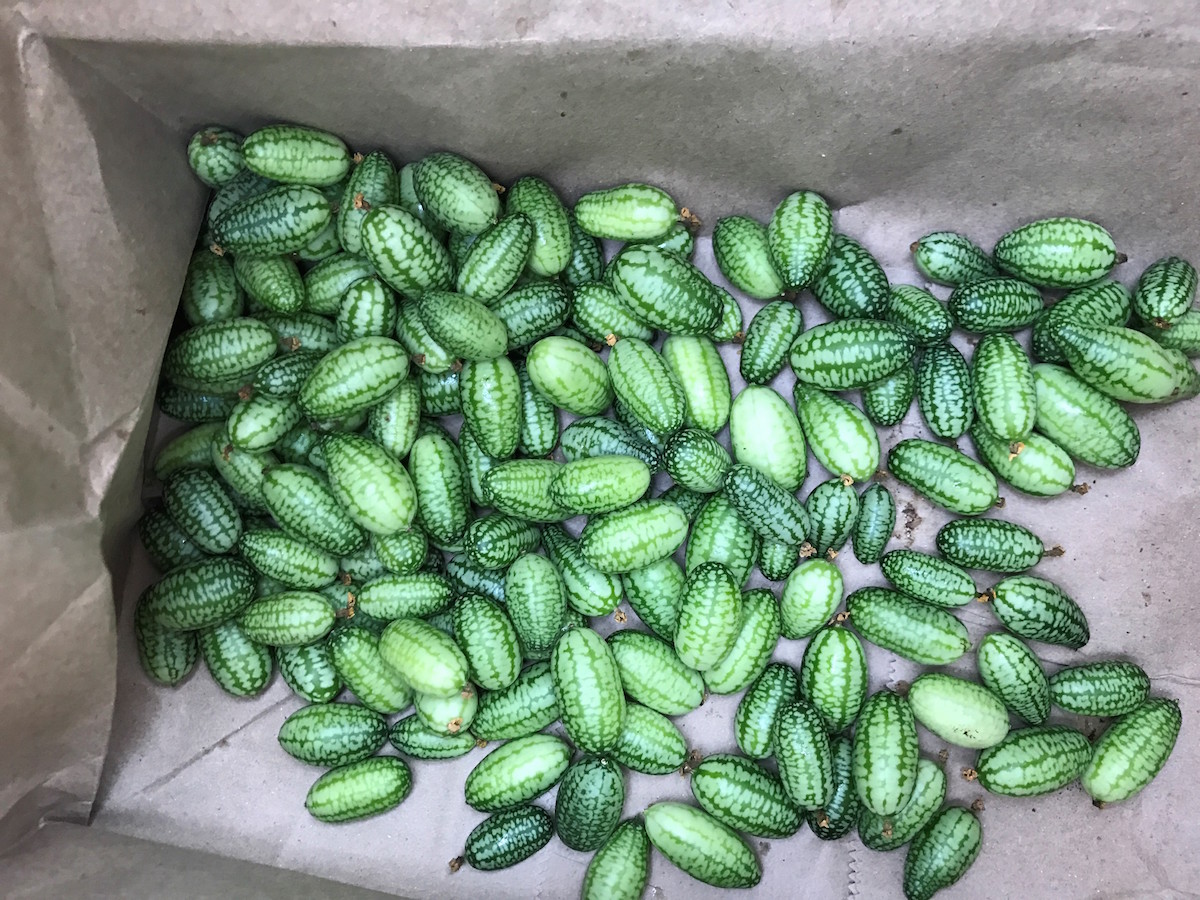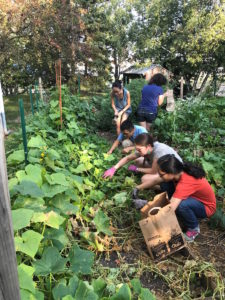Macalester’s MULCH Garden Gets Reborn
- by Peter Todaro

Freshly picked sour gherkins
A campus garden can be a beautiful place to visit in fall.
The harvest means wading through tall, spindly tomato bushes, combing through sour gherkin vines, and avoiding stepping on butternut squashes lying beneath a sea of deep green cucurbit leaves. This was the experience that members of the newly re-formed Macalester Urban Land and Community Health club (MULCH) had this fall as they harvested produce for Macalester College’s Café Mac.
As a Bon Appétit Fellow, I work on expanding Bon Appétit’s Campus Farmers Network, and was excited to join them and learn more about MULCH.
Having existed in various manifestations for more than two decades, MULCH is an institution of sustainability on campus. In its current form, it’s a small fenced-off plot nestled between two special interest language houses for students. Inside, raised beds dot the garden, interrupted only by a pathway covered in wood chips to suppress weeds. A chicken coop (currently unoccupied) stands on one end of the fence, a tidy shed for tools on the other.

Macalester students harvesting sour gherkins from the MULCH garden plot for use at Café Mac
Like many campus farms, MULCH has waxed and waned over the years, depending on the level of student interest. During years of reduced involvement, MULCH has leaned on Macalester’s Sustainability Office, which provides funding for an intern who tends to the garden every summer, maintaining continuity and ensuring that gardening expertise is passed down from generation to generation as novice student agriculturists begin to get their hands dirty. This year saw a new group of students, brimming with enthusiasm about sustainable agriculture, take up the joys and challenges that come with it.
Unaccustomed to the feral-looking plants that popped out of trellises and raised beds around them, the students waded through the vegetation that had grown up during a brief lull between when the summer intern finished her work and their reignition of MULCH began. Plant identification came first: butternut squash, heirloom tomatoes, sour gherkins, oregano…and is that a bolted head of lettuce or a weed? Then questions of marketability: What is there enough of to sell to Café Mac? Will they take only five bunches of kale? What to do with the mountain of mint that’s taken over some of the garden?
It’s right here that the Bon Appétit culinary team’s flexibility in sourcing local ingredients and innovative menu writing leads to important partnerships with campus farms and gardens around the country, especially very small ones like MULCH. Café Mac Executive Chef Doug Tigges bought everything the MULCH students could bring them, and the way his team used the ingredients points to a method Bon Appétiters everywhere can leverage to tell the story of the great work campus farmers and gardeners do. The kale, for instance, was used as a specialty ingredient in the smoothie station, a way to make the small amount of greens go far and simultaneously get MULCH’s name up on the menu, increasing awareness of the garden among the student body. Doug also pledged to buy the endless mint for use as a hyperlocal aqua fresca flavorer and garnish at Café Mac’s renowned curry bar.
Knowing that the Café Mac team will be there to support them and help spread the story of their work, the MULCH students hope to expand to a second plot next year.